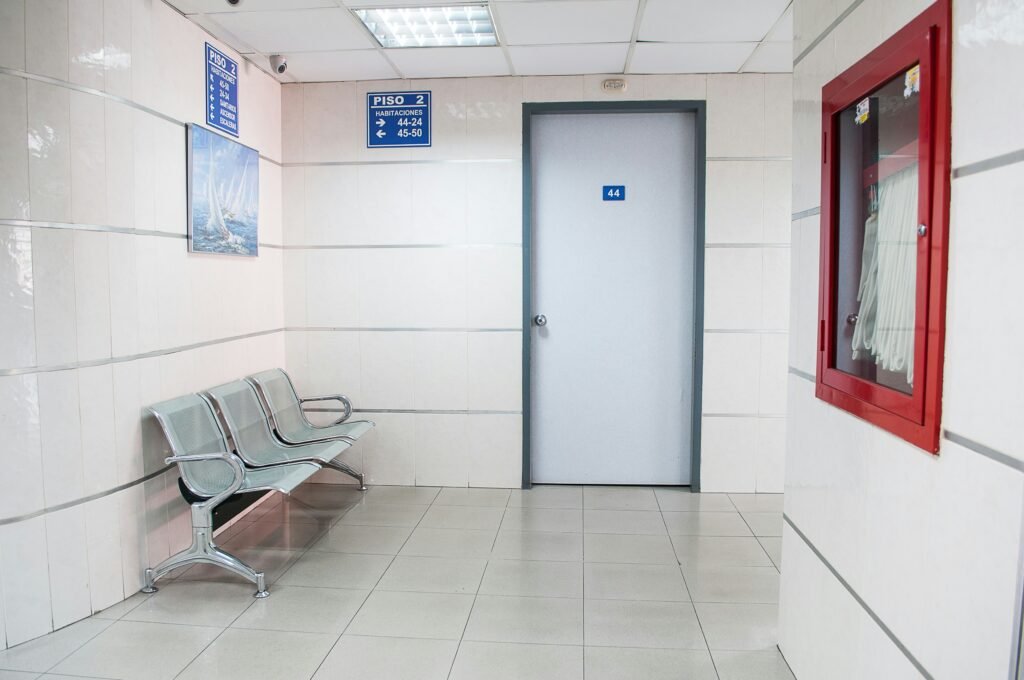
Oxygen therapy can be a vital treatment option for individuals with various respiratory conditions, helping them obtain the oxygen their bodies need for optimal functioning. However, with several different methods and approaches available, knowing the best practices for oxygen therapy is crucial. From understanding the appropriate flow rates and delivery systems to ensuring proper monitoring and precautions, this article will provide you with valuable insights into the best practices for effective and safe oxygen therapy.
Administering Oxygen
Administering oxygen therapy involves several important considerations to ensure the best outcomes for patients. The following sections will outline the key aspects of administering oxygen, from determining the need for therapy to ensuring proper oxygen flow.
Determining the Need for Oxygen Therapy
Before initiating oxygen therapy, it is crucial to assess the patient’s need for supplemental oxygen. This determination is typically made based on the patient’s oxygen saturation levels and respiratory rate. An oxygen saturation level below 90% or a respiratory rate higher than normal may indicate the need for supplemental oxygen.
Additionally, consultation with healthcare professionals, such as doctors and respiratory therapists, is essential to accurately evaluate the patient’s condition and determine the appropriateness of oxygen therapy.
Choosing the Right Oxygen Delivery System
Selecting the appropriate oxygen delivery system is another critical aspect of administering oxygen therapy. The choice of system depends on various factors, including the patient’s specific needs, lifestyle, and activity level.
Common oxygen delivery systems include nasal cannulas, oxygen masks, and oxygen concentrators. Nasal cannulas are widely used due to their comfort and convenience, while oxygen masks provide higher oxygen concentrations. Oxygen concentrators, on the other hand, are suitable for patients requiring continuous oxygen flow.
It is essential to consider the patient’s comfort, oxygen requirements, and the ability to effectively deliver oxygen when deciding on the most suitable oxygen delivery system.
Ensuring Proper Oxygen Flow
A crucial aspect of administering oxygen therapy is ensuring that the prescribed oxygen flow rate is accurately delivered to the patient. This requires regular monitoring and adjustment as needed.
To ensure proper oxygen flow, it is essential to routinely check and calibrate the oxygen delivery system’s flow meter. Additionally, healthcare professionals should provide clear instructions to patients on how to adjust the flow rate and ensure that they understand the importance of adhering to the prescribed flow rate.
Monitoring Oxygen Therapy Successful oxygen therapy requires diligent monitoring to assess its effectiveness and make any necessary adjustments. The following sections will cover the key aspects of monitoring oxygen therapy, including checking oxygen saturation levels, monitoring respiratory rate, and assessing the patient’s overall condition.
Checking Oxygen Saturation Levels
Regularly monitoring oxygen saturation levels is vital to gauge the effectiveness of oxygen therapy. This is typically done using a pulse oximeter, a non-invasive device that measures the oxygen saturation level in the blood.
Healthcare professionals should instruct patients on how to use the pulse oximeter correctly and encourage them to monitor their oxygen saturation levels regularly. It is important to educate patients about the desired range of oxygen saturation levels and guide them on taking appropriate actions if levels fall below the recommended range.
Monitoring Respiratory Rate
Aside from oxygen saturation levels, monitoring the patient’s respiratory rate helps assess the effectiveness of oxygen therapy. An increased respiratory rate may suggest the need for a higher oxygen flow rate or further evaluation of the patient’s condition.
Healthcare professionals should educate patients on how to monitor their own respiratory rate and the significance of any changes. Regularly reviewing this information with the healthcare team will allow for appropriate adjustments to the oxygen therapy plan.
Assessing the Patient’s Condition
Continuous assessment of the patient’s overall condition and response to oxygen therapy is essential. This includes monitoring vital signs, such as heart rate and blood pressure, as well as any symptoms or changes in the patient’s breathing patterns.
Regular communication and collaboration between the patient and healthcare professionals are crucial to ensure any concerns or changes in the patient’s condition are promptly addressed. This ongoing assessment enables the healthcare team to make necessary modifications to the oxygen therapy plan and optimize patient outcomes.
Maintaining Oxygen Equipment Proper maintenance of oxygen equipment is vital for its safe and effective use. Regular inspections, cleaning, disinfecting, and timely replacement of supplies are necessary to ensure the equipment’s longevity and the patient’s safety. The following sections will provide guidance on maintaining oxygen equipment.

Regularly Inspecting Oxygen Equipment
Performing routine inspections of oxygen equipment is essential to identify any issues or abnormalities that may affect its functionality or safety. Inspections should include checking the oxygen concentrator or cylinder for visible damage, inspecting the oxygen tubing for cracks or leaks, and ensuring the flow meter is working accurately.
Healthcare professionals should educate patients on how to conduct visual inspections and encourage them to report any concerns promptly. Regular inspections help identify potential problems early on and allow for timely intervention or replacement of equipment when necessary.
Cleaning and Disinfecting Equipment
Proper cleaning and disinfection of oxygen equipment are critical to prevent the buildup of bacteria or other contaminants that can compromise patient safety. Regular cleaning and disinfection should be performed according to the manufacturer’s instructions or as advised by healthcare professionals.
Patients should be educated on proper cleaning techniques for equipment they handle regularly, such as nasal cannulas or masks. Healthcare professionals should emphasize the importance of maintaining clean equipment and provide guidance on the appropriate cleaning products to use.
Replacing Oxygen Supplies
Timely replacement of oxygen supplies is necessary to ensure uninterrupted oxygen therapy. Oxygen cylinders should be refilled or replaced when the pressure falls below the recommended level. Similarly, oxygen concentrator filters should be changed as per the manufacturer’s guidelines to maintain optimal performance.
Patients should be educated on the importance of regular supply replacements and provided with clear instructions on how to obtain new supplies. By ensuring adequate oxygen supply, patients can experience consistent and effective therapy.
Providing Education to Patients Educating patients about oxygen therapy is crucial in promoting their understanding, compliance, and overall well-being. The following sections will discuss the key elements of patient education, including explaining the purpose and benefits of oxygen therapy, demonstrating equipment use, and discussing potential risks and safety precautions.
Explaining the Purpose and Benefits of Oxygen Therapy
Effective patient education begins with providing a clear explanation of the purpose and benefits of oxygen therapy. Patients should understand that oxygen therapy aims to supply their body with the necessary oxygen to improve breathing, alleviate symptoms, and enhance overall well-being.
Healthcare professionals should tailor this explanation to the patient’s specific condition and needs. By ensuring patients comprehend the significance of oxygen therapy in managing their health, they are more likely to adhere to the prescribed treatment plan.
Demonstrating Oxygen Equipment Use
Proper usage of oxygen equipment is crucial for maximizing the benefits of oxygen therapy. Healthcare professionals should provide demonstrations on how to assemble, use, and disassemble the specific oxygen delivery system prescribed to the patient.
Patients should be given ample opportunity to practice using the equipment under supervision to build confidence and ensure correct usage. Emphasizing the importance of following instructions and seeking clarification when needed will help patients feel empowered and comfortable with their oxygen therapy equipment.
Discussing Potential Risks and Safety Precautions
While oxygen therapy offers numerous benefits, it is essential to address any potential risks or safety precautions. Patients should be educated about the potential fire hazards associated with oxygen use and instructed on the appropriate precautions to prevent accidents.
Additionally, patients should be aware of the risk of oxygen toxicity if the prescribed flow rate is not followed. Educating patients about the signs and symptoms of oxygen toxicity and the importance of notifying healthcare professionals if any occur is crucial in preventing adverse effects.
By providing comprehensive education on the purpose, benefits, proper usage, and potential risks of oxygen therapy, patients can make informed decisions and actively participate in their treatment.
Managing Oxygen Therapy in Special Cases Oxygen therapy may present unique considerations when administered to certain patient populations. This section will address specific considerations for children and infants, elderly patients, and patients with chronic lung diseases.

Oxygen Therapy for Children and Infants
Administering oxygen therapy to children and infants requires special attention to ensure their safety and comfort. Healthcare professionals should consider factors such as the child’s age, size, and ability to communicate when selecting appropriate oxygen delivery systems.
Parents or caregivers should be involved in the education and training process to ensure proper administration at home. It is essential to provide detailed instructions on equipment usage, cleaning, and safety precautions specific to children and infants.
Oxygen Therapy for Elderly Patients
Elderly patients often require oxygen therapy due to various respiratory conditions or age-related changes. Healthcare professionals should consider the unique needs of elderly patients when determining the most suitable oxygen delivery system.
Proper education is crucial in ensuring elderly patients understand the purpose of oxygen therapy and can effectively use and maintain it. Special attention should be given to addressing any concerns or potential challenges associated with oxygen therapy for older adults.
Oxygen Therapy for Patients with Chronic Lung Diseases
Patients with chronic lung diseases, such as chronic obstructive pulmonary disease (COPD), often benefit from oxygen therapy to improve their quality of life. It is essential to assess these patients’ individual needs and develop a comprehensive treatment plan tailored to their condition.
Healthcare professionals should collaborate closely with respiratory therapists and physicians specialized in managing chronic lung diseases. Regular monitoring, appropriate adjustments to oxygen flow rate, and education on self-management techniques are crucial for ensuring the best outcomes for these patients.
Addressing Common Challenges Oxygen therapy can present various challenges that need to be effectively managed to optimize patient care. The following sections will discuss common challenges, including preventing dryness and irritation, managing oxygen tubing, and minimizing fire hazards.
Preventing Dryness and Irritation
Oxygen therapy can sometimes cause dryness and irritation in the nasal passages or throat. To prevent these discomforts, healthcare professionals should advocate for proper humidification of the delivered oxygen, especially if the flow rate is high or therapy is long-term.
Patients should be encouraged to use saline nasal sprays or moisturizers to alleviate dryness. It is essential to educate patients on how to properly clean and maintain nasal cannulas or masks to prevent bacterial or fungal growth, which can further contribute to nasal dryness and irritation.
Managing Oxygen Tubing
Proper management of oxygen tubing is essential to ensure uninterrupted oxygen flow. Healthcare professionals should guide patients on securing the tubing to prevent accidental disconnection or entanglement.
Regularly inspecting the tubing for any signs of wear or damage is crucial, as worn tubing can compromise the delivery of oxygen. It is important to educate patients on the proper care and replacement of oxygen tubing to maintain its integrity and safety.
Minimizing Fire Hazards
Oxygen supports combustion, making it crucial to minimize fire hazards when using oxygen therapy. Patients and caregivers should be educated on the potential fire risks and provided with clear guidelines to ensure safety.
Emphasize the importance of keeping oxygen away from open flames, heat sources, smoking materials, and flammable substances. Regularly inspecting the environment for potential fire hazards, such as frayed electrical cords or faulty outlets, is critical to maintaining a safe environment for oxygen therapy.
Ensuring Proper Ventilation
Proper ventilation is vital when administering oxygen therapy to prevent oxygen concentration build-up and ensure adequate oxygen supply. The following sections will discuss avoiding oxygen concentration build-up, assessing room ventilation, and preventing oxygen accumulation in confined spaces.

Avoiding Oxygen Concentration Build-Up
To prevent oxygen concentration build-up, it is crucial to ensure proper oxygen flow rates and avoid excessive oxygen supplementation. Patients should be educated on the importance of adhering to the prescribed oxygen flow rate and cautioned against using higher flow rates without healthcare professionals’ guidance.
Monitoring oxygen saturation levels regularly can help identify any potential oxygen concentration build-up. Patients should be advised to report any signs or symptoms of oxygen toxicity promptly to prevent complications.
Assessing Adequate Room Ventilation
Proper room ventilation is crucial to ensure sufficient oxygen supply and prevent the accumulation of carbon dioxide. Healthcare professionals should evaluate the patient’s living environment and advise on ensuring adequate air exchange.
Patients should be advised to keep windows open, use fans, or consider other ventilation methods when using oxygen therapy. Adequate room ventilation helps maintain an optimal oxygen-carbon dioxide balance and promotes patient comfort and safety.
Preventing Oxygen Accumulation in Confined Spaces
Oxygen should never be allowed to accumulate in confined spaces, such as small rooms or vehicles, as it can create a fire hazard. Patients must be educated on the potential dangers of trapping oxygen in enclosed spaces and instructed to avoid doing so.
Instruct patients on the importance of proper ventilation and avoiding the use of oxygen therapy in small, poorly ventilated areas. Patients should be advised to discuss any concerns or questions regarding oxygen therapy and confined spaces with their healthcare professionals.
Coordinating with Healthcare Professionals Effective coordination with healthcare professionals is crucial in providing optimal oxygen therapy. The following sections will outline the importance of collaborating with respiratory therapists, involving doctors in oxygen therapy management, and effective communication with nurses and caregivers.
Collaborating with Respiratory Therapists
Respiratory therapists play a vital role in managing oxygen therapy, especially for patients with complex respiratory conditions. Collaborating and consulting with respiratory therapists helps ensure appropriate treatment plans, oxygen flow rate adjustments, and ongoing monitoring.
Healthcare professionals should establish effective lines of communication with respiratory therapists to facilitate a comprehensive approach to patient care. Regular updates and discussions regarding patient progress, challenges, and adjustments to the oxygen therapy plan will help optimize outcomes.
Involving Doctors in Oxygen Therapy Management
Doctors play a crucial role in overseeing oxygen therapy and managing any underlying medical conditions. It is important to involve doctors early on in the decision-making process to ensure accurate assessment of the patient’s condition and prescribing appropriate oxygen therapy.
Regular communication between healthcare professionals and doctors allows for an ongoing evaluation of the effectiveness of the oxygen therapy plan and any necessary adjustments. Doctors should also be involved in reviewing and interpreting relevant test results and clinical data to guide patient management effectively.
Communicating with Nurses and Caregivers
Nurses and caregivers play a vital role in day-to-day patient care and support. Effective communication with nurses and caregivers helps ensure consistent and appropriate delivery of oxygen therapy.
Healthcare professionals should provide clear instructions to nurses and caregivers on the patient’s oxygen therapy plan, including the prescribed flow rate, any necessary adjustments, and monitoring requirements. Regular communication and updates on patient progress, concerns, and potential challenges allow nurses and caregivers to provide optimal care and support.
Addressing Emotional and Psychological Aspects Emotional and psychological support are essential components of comprehensive oxygen therapy. The following sections will discuss providing emotional support to patients, educating patients on the psychological impact, and advising on lifestyle adjustments.
Providing Emotional Support to Patients
Undergoing oxygen therapy can be emotionally challenging for patients, especially if it signifies a significant change in their health status. It is crucial to provide emotional support to patients and address any concerns or fears they may have.
Healthcare professionals should create a supportive environment where patients feel comfortable expressing their emotions and asking questions. Offering reassurance, empathy, and active listening can go a long way in alleviating any anxiety or emotional distress patients may experience.
Educating Patients on Psychological Impact
Patients should be educated on the potential psychological impact of oxygen therapy to help them better understand their emotions and cope with any associated challenges. Some patients may experience frustration, sadness, or a sense of dependency.
Healthcare professionals should normalize these emotions and emphasize that seeking support from loved ones, support groups, or mental health professionals is beneficial. By acknowledging the psychological aspect of oxygen therapy, patients can develop coping strategies and maintain a positive outlook.
Advising on Lifestyle Adjustments
Oxygen therapy may require patients to make certain lifestyle adjustments to accommodate their treatment. This may include modifying daily routines, travel plans, or social activities.
Healthcare professionals should discuss these adjustments with patients and offer guidance on balancing their oxygen therapy needs with their desired lifestyle. Encouraging patients to embrace the changes positively and providing practical tips on integrating oxygen therapy into their lives will help them adapt more easily.
Ensuring Compliance and Follow-Up
Achieving the best outcomes with oxygen therapy relies on patient compliance and ongoing follow-up. The following sections will discuss establishing a schedule for follow-up appointments, monitoring long-term oxygen therapy, and encouraging adherence to prescribed oxygen therapy.
Establishing a Schedule for Follow-Up Appointments
Regular follow-up appointments are essential to assess the patient’s progress, adjust the oxygen therapy plan, and address any concerns. Establishing a schedule for these appointments helps ensure ongoing patient care and effective management of oxygen therapy.
Healthcare professionals should clearly communicate the importance of follow-up appointments to patients and help them understand the significance of ongoing monitoring. Promptly addressing any issues or adjustments during these appointments enables healthcare professionals to optimize oxygen therapy and improve patient outcomes.
Monitoring Long-Term Oxygen Therapy
For patients requiring long-term oxygen therapy, ongoing monitoring is crucial. This includes regular assessment of the patient’s condition, oxygen saturation levels, and the appropriateness of the prescribed flow rate.
Patients should be educated on the importance of adherence to long-term oxygen therapy and the need for continuous monitoring. Encourage patients to actively communicate any changes or concerns they may have between follow-up appointments to facilitate timely adjustments and ensure optimal therapy.
Encouraging Adherence to Prescribed Oxygen Therapy
Adherence to the prescribed oxygen therapy plan is vital for its effectiveness and patient well-being. Healthcare professionals should emphasize the importance of following the prescribed oxygen flow rate, using the designated oxygen delivery system, and maintaining proper equipment care.
Regularly reviewing the benefits of oxygen therapy and addressing any concerns or barriers to adherence will help patients understand the value of compliance. Encouraging patients to actively participate in their treatment and addressing any challenges they face will foster a collaborative approach towards achieving successful oxygen therapy outcomes.
In conclusion, administering oxygen therapy requires comprehensive attention to various aspects, including determining the need for therapy, choosing the right delivery system, ensuring proper flow, monitoring its effectiveness, maintaining equipment, providing patient education, managing special cases, addressing common challenges, ensuring proper ventilation, coordinating with healthcare professionals, addressing emotional and psychological aspects, and ensuring compliance and follow-up. By following these best practices, healthcare professionals can optimize patient care, promote patient understanding and adherence, and ultimately improve the overall outcomes of oxygen therapy.









